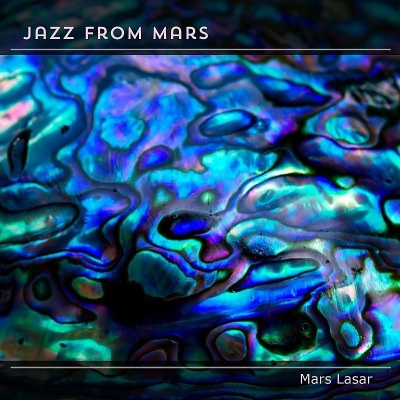
Jazz from Mars
Composer and technologist Mars Lasar, has had a unique career that has influenced the evolution of technology and its relationship to music and composing. Mars was obsessed with gadgets as far back as he can remember, going so far as to pull apart watches to figure out how they worked. At 11 his mother, who was an artist from Germany, introduced Lasar to music. His love for both music and gadgets quickly fused in harmony. According to Lasar, "I'd had extensive classical training and composed many themes on the piano, but I needed more and technology was the answer. So back in 1978 you'd find me with a simple cassette player, shortwave radio and a stopwatch. I put the cassette player in pause record, searched for the correct sound on shortwave, then hit record on the cassette player and used the stopwatch to determine when to stop. I'd do that over and over again for an hour to get a rhythmic sample of a shortwave radio sequence. I'd try all kinds of shortwave sampling combinations together with time combinations as long as a full second and down to 1/4 of a second with real neat results. Sequencing and sampling became my obsession." Multi-track sequencing which did not exist at that point and sampling was where Lasar was destined to go." Shortly after, he was introduced to synthesizers and monophonic sequencers by another student in his high school who was obsessed with electronics, mathematics and music. Unknowingly, Lasar was perfectly situated to become a pioneer in the music sequencer explosion that occurred in the late 70s. Lasar remembers, By 1981, he was deep in the synthesizer/sequencing world along with Kraftwerk, Tomita and Tangerine Dream. I was in a band, IQ, with one other keyboard player, Ken Davis, and singer, Darpan. They dressed up in space suits and played space music on street corners, pubs, discos and open auditoriums. The band became such a popular spectacle we opened for Midnight Oil, Split Enz (featuring the Finn brothers of Crowded House) and eventually Mike Oldfield during the Tubular Bells tour. As struggling artists, the band huddled in small house and perfected their unusual craft using only synthesizers, drum machines and vocals. Until In 1979, they met Kim Ryrie founder of Fairlight Instruments, the first computer software driven musical instrument manufacturer. Kim hired Mars, knowing he might be a good addition to the Fairlight team. He worked for Fairlight for eight years. During that time, Lasar worked with their R&D team to help create the first multi-track sampler/sequencer "Page R". "I spent countless hours building the first sample library and making demo compositions. I composed countless compositions using my sequencing method which was sent out to the world with the machines at $80,000 a piece. I demonstrated the Fairlight at audio trade shows AES, NAB and others, and to many artists and producers including Alan Parsons, Hans Zimmer, Kate Bush, Duran Duran, Herbie Hancock and many others." After Fairlight, Lasar came to Los Angeles in 1990 and worked with Seal and Hans Zimmer. He sequenced Seal's song "Crazy" with Trevor Horn and worked on Days of Thunder with Hans Zimmer. Lasar relates, "At that point in my career I was focusing on composing and sound design. The reason I got to know all these guys is that they all loved music technology and the Fairlight." Tecchnology and music was our future.
